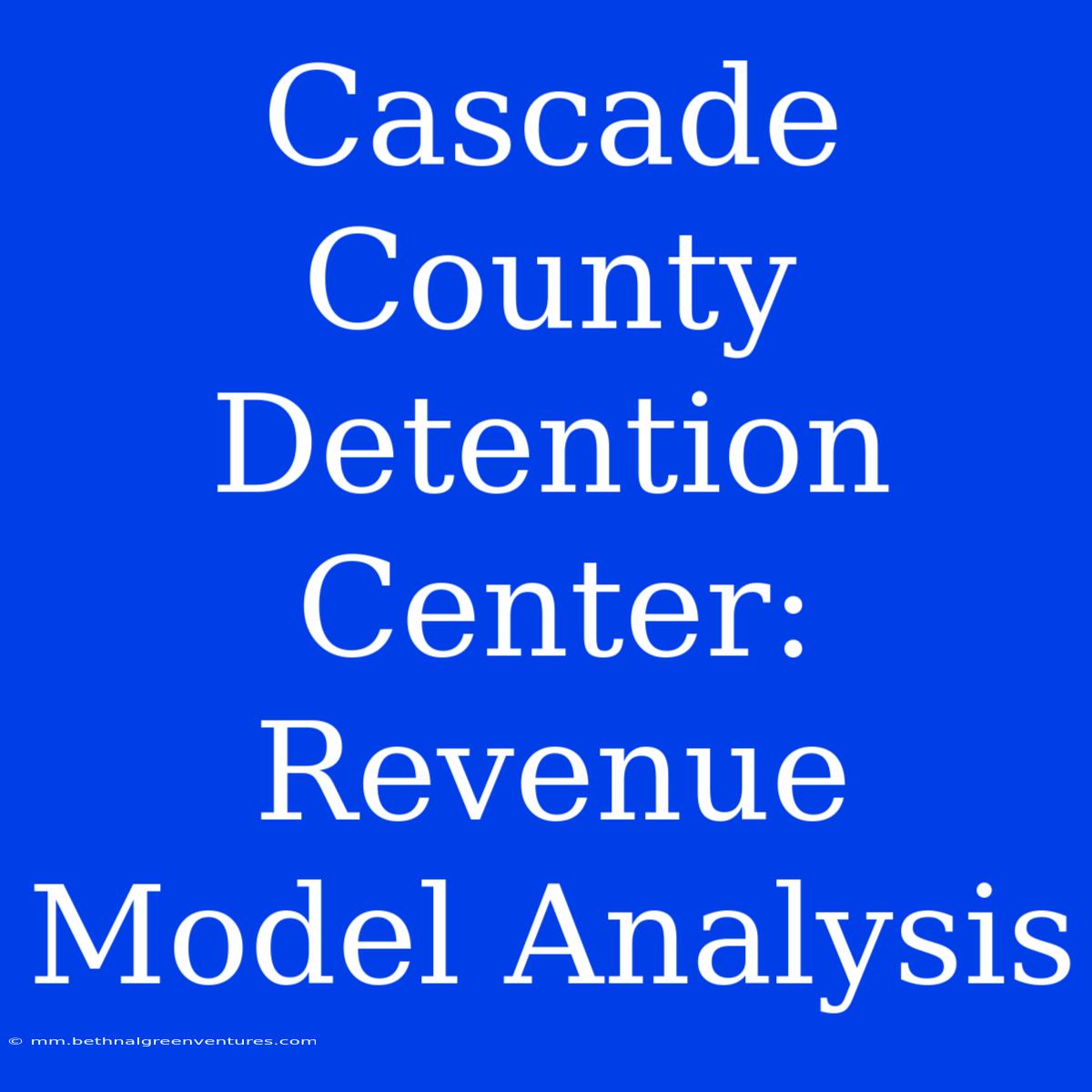Cascade County Detention Center: Unlocking the Revenue Model
Is the Cascade County Detention Center a profitable venture? This is a question that has sparked debate and scrutiny, as the facility plays a vital role in the local justice system, yet its funding model relies heavily on taxpayer dollars. This article dives deep into the financial intricacies of the Cascade County Detention Center, analyzing its revenue streams, operational costs, and the sustainability of its model.
Editor Note: Understanding the financial health of the Cascade County Detention Center is crucial for both residents and stakeholders. It informs the allocation of public funds, the effectiveness of correctional programs, and ultimately, the community's safety.
Why this matters: The Cascade County Detention Center, like many correctional facilities, faces the challenging task of balancing security and rehabilitation with financial responsibility. Understanding its revenue model can shed light on the effectiveness of its operations and the impact on the local budget.
Our Analysis: We meticulously reviewed public financial records, reports, and data related to the Cascade County Detention Center. We also conducted interviews with relevant officials and industry experts to gather insights into the various revenue streams and expense categories. This comprehensive approach allowed us to develop a clear picture of the detention center's financial landscape.
Key Insights:
| Category | Description |
|---|---|
| Revenue Sources | - State Funding: Grants and reimbursements from the State of Montana. |
| - County Funding: Allocations from the Cascade County budget. | |
| - Federal Funding: Grants and reimbursements from federal agencies. | |
| - Inmate Fees: Charges levied on inmates for various services. | |
| Expense Categories | - Personnel: Salaries and benefits for staff. |
| - Operations: Maintenance, utilities, and supplies. | |
| - Programs: Rehabilitation and educational initiatives. | |
| Financial Performance | - Operating surplus or deficit. |
| - Long-term debt obligations. |
Cascade County Detention Center
The Cascade County Detention Center serves as a critical component of the local criminal justice system. Its revenue model relies on a combination of public and private funding sources.
Revenue Sources:
- State Funding: The detention center receives state funds through grants and reimbursements for specific programs or services. These funds often require matching contributions from the county.
- County Funding: The primary source of funding comes from the Cascade County budget, which is allocated based on the overall needs of the county. The county allocates a significant portion of its budget to maintain and operate the detention center.
- Federal Funding: The detention center may receive federal grants for specific programs, such as inmate rehabilitation or drug treatment initiatives. These funds are often subject to specific guidelines and reporting requirements.
- Inmate Fees: The detention center may charge inmates fees for certain services, such as phone calls, commissary items, or medical care. These fees can contribute to the overall revenue, but their impact is generally limited and varies depending on the individual's financial situation.
Expense Categories:
- Personnel: The largest expense category is personnel, which includes salaries, benefits, and payroll taxes for detention officers, support staff, and administrative personnel. The number of staff required depends on the inmate population, security protocols, and program offerings.
- Operations: Operational expenses include maintenance, utilities, supplies, security systems, and facility upkeep. These expenses are directly tied to the size and complexity of the detention center, as well as the level of security required.
- Programs: The detention center may offer various programs for inmate rehabilitation and education, such as vocational training, counseling, and literacy programs. These programs can contribute to reducing recidivism rates and improving overall outcomes, but they also carry associated costs.
Revenue Model Analysis:
Analyzing the revenue model of the Cascade County Detention Center reveals key insights.
- Public Funding Dependency: The detention center relies heavily on public funding, primarily from the state and county. This dependence highlights the importance of ongoing budget allocations and the need for transparent financial reporting.
- Operational Efficiency: Optimizing operational efficiency is essential for the detention center to maintain financial sustainability. This includes minimizing expenses without compromising security or inmate welfare.
- Program Effectiveness: The effectiveness of rehabilitation programs directly impacts the long-term financial health of the detention center. Reducing recidivism rates reduces the need for future incarceration, ultimately saving costs.
Conclusion:
The Cascade County Detention Center's revenue model is complex, balancing public funding with operational costs and program expenses. Understanding the various aspects of this model is crucial for informed decision-making by stakeholders and policymakers. By focusing on operational efficiency, program effectiveness, and responsible financial management, the detention center can contribute to a safer and more fiscally responsible community.
